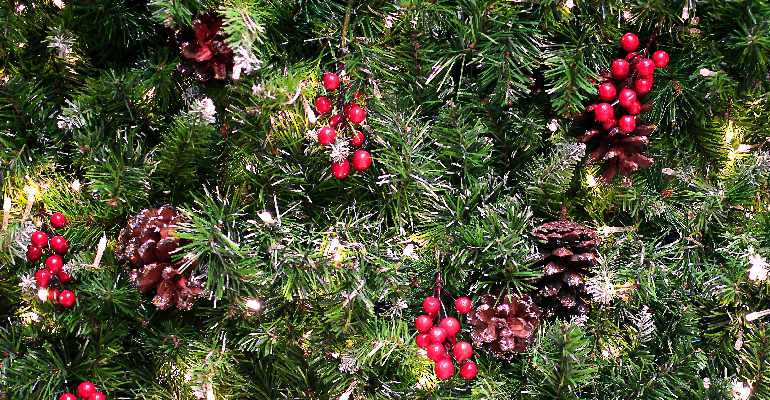
Ever wondered why we sing Auld Lang Syne every New Years Eve? Or, the reason why we take our decorations down in the first week of January?
The answer? It’s thanks to our industrious ancestors, the Victorians. And, with New Year's Eve just a few days away, historians at Blists Hill Victorian Town have delved into the archives to lift the lid on the Victorian traditions that have made their way into the 21st century, as well as how our Victorian ancestors would have celebrated the dawn of the coming year at the end of the 19th century.
The Victorians were no strangers to a party, and just like we do today, families and friends would gather together on the 31st December to wave goodbye to old and welcome in the new.
It’s at these parties that the tradition of singing Auld Lang Syne originated. Originally a poem penned by Scottish poet Robert Burns in 1788, ‘Auld Lang Syne’ (which roughly translates to ‘for old times sake’) was first sung on Hogmanay in Scotland and quickly spread throughout the British Isles.
It must have been popular because it’s a tradition that has stood the test of time not just in the UK but across the pond too.
The era was one full of superstitions and the Victorians believed that warding off evil spirits was vital to ensure their year was full of prosperity and good health.
On New Years Eve in the 1800’s, the streets of towns across the country would have been filled with the sound of drums as young men partook in the ancient practice of ‘wassailing’ (an Old Saxon word for ‘good health’) wandering around the town making noise to ward off spirits.
Church bells would also have rung out at the strike of midnight to chase away evil.
The evening would have been a busy one for young men as they roamed around offering to be the first person to cross the threshold of people’s homes in what was known as ‘first footing’.
It was believed to be unlucky if the ‘first-foot’ of the year to enter the home belonged to a woman so young men would cross the threshold for a small fee, bringing gifts of coal, food, whiskey or greenery to ensure a prosperous and healthy year ahead.
Ensuring that cupboards and pockets were full at the year’s start as well as making sure a fire was blazing through the New Year also helped to ensure prosperity and warmth for the new year.
What about the annual post-Christmas clean? In the Victorian era, it was traditional to clean the house before the New Year when all of the rubbish would be removed from the home and ashes cleared from the hearth to symbolise a fresh beginning.
Celebrations and festivities surrounding Christmas and New Year would continue until Twelfth Night, on January 6th, which marked the Feast of the Epiphany.
That is the date it is thought the Three Wise Men were guided by the star to Bethlehem and so, on 6th January all decorations were removed to ensure the household good luck in the coming year.
In some larger homes, Christmas greenery like holly and ivy was kept up until Candlemas on the February 1st. This was the final deadline for removing all signs of Christmas otherwise it was believed that there would be a death in the family before the following Christmas.
Particular counties would have had their own traditions and in some, when the festive greenery was removed, it was sometimes replaced by bowls of snowdrops, which were known as Candlemas. This was known as the “white purification” as the snowdrops were thought to purify the house ready for the New Year.
So, it turns out it wasn’t just the Industrial Revolution that the Victorians gave us, and without them, New Year might look very different.

 Five Amazing Chocolate Varieties Worldwide You Must Try
Five Amazing Chocolate Varieties Worldwide You Must Try
 Five Unique Pancake Combinations Around The World
Five Unique Pancake Combinations Around The World
 Five Of The Most Wondrous Ancient Ruins In The World
Five Of The Most Wondrous Ancient Ruins In The World
 Five Of The Most Inhospitable Places on the Planet
Five Of The Most Inhospitable Places on the Planet
 Five Animals You Wouldn’t Believe Are Kept as Pets
Five Animals You Wouldn’t Believe Are Kept as Pets